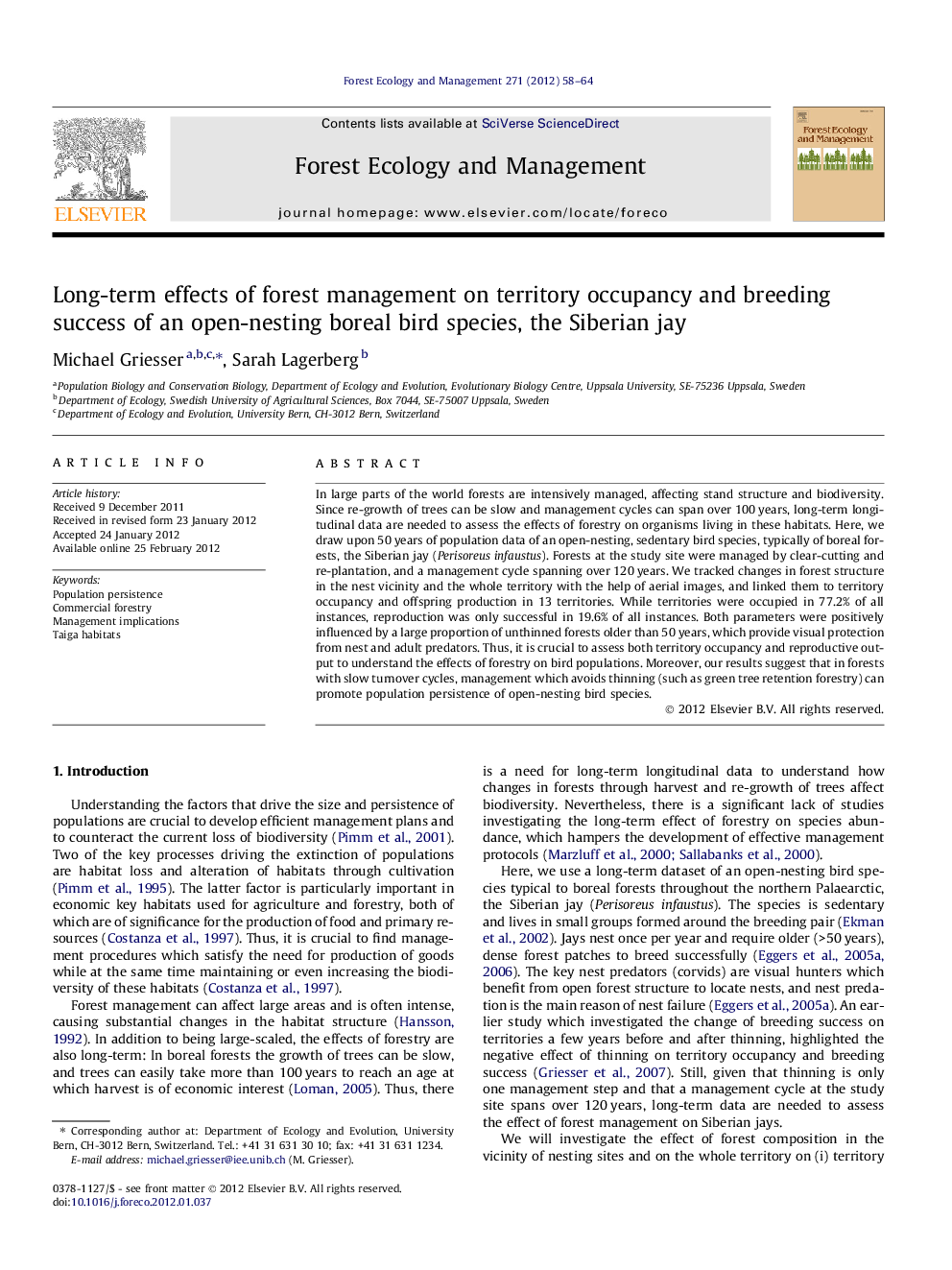| کد مقاله | کد نشریه | سال انتشار | مقاله انگلیسی | نسخه تمام متن |
|---|---|---|---|---|
| 87398 | 159249 | 2012 | 7 صفحه PDF | دانلود رایگان |

In large parts of the world forests are intensively managed, affecting stand structure and biodiversity. Since re-growth of trees can be slow and management cycles can span over 100 years, long-term longitudinal data are needed to assess the effects of forestry on organisms living in these habitats. Here, we draw upon 50 years of population data of an open-nesting, sedentary bird species, typically of boreal forests, the Siberian jay (Perisoreus infaustus). Forests at the study site were managed by clear-cutting and re-plantation, and a management cycle spanning over 120 years. We tracked changes in forest structure in the nest vicinity and the whole territory with the help of aerial images, and linked them to territory occupancy and offspring production in 13 territories. While territories were occupied in 77.2% of all instances, reproduction was only successful in 19.6% of all instances. Both parameters were positively influenced by a large proportion of unthinned forests older than 50 years, which provide visual protection from nest and adult predators. Thus, it is crucial to assess both territory occupancy and reproductive output to understand the effects of forestry on bird populations. Moreover, our results suggest that in forests with slow turnover cycles, management which avoids thinning (such as green tree retention forestry) can promote population persistence of open-nesting bird species.
► We draw upon 50 years population data of an open-nesting boreal bird species.
► Territories were at 77.2% occupied, but reproduction was rarely successful.
► Unthinned, older forests boosted territory occupancy and breeding success.
► This habitat type provides visual protection from nest and adult predators.
► Unthinned forests promote population persistence of open-nesting birds.
Journal: Forest Ecology and Management - Volume 271, 1 May 2012, Pages 58–64